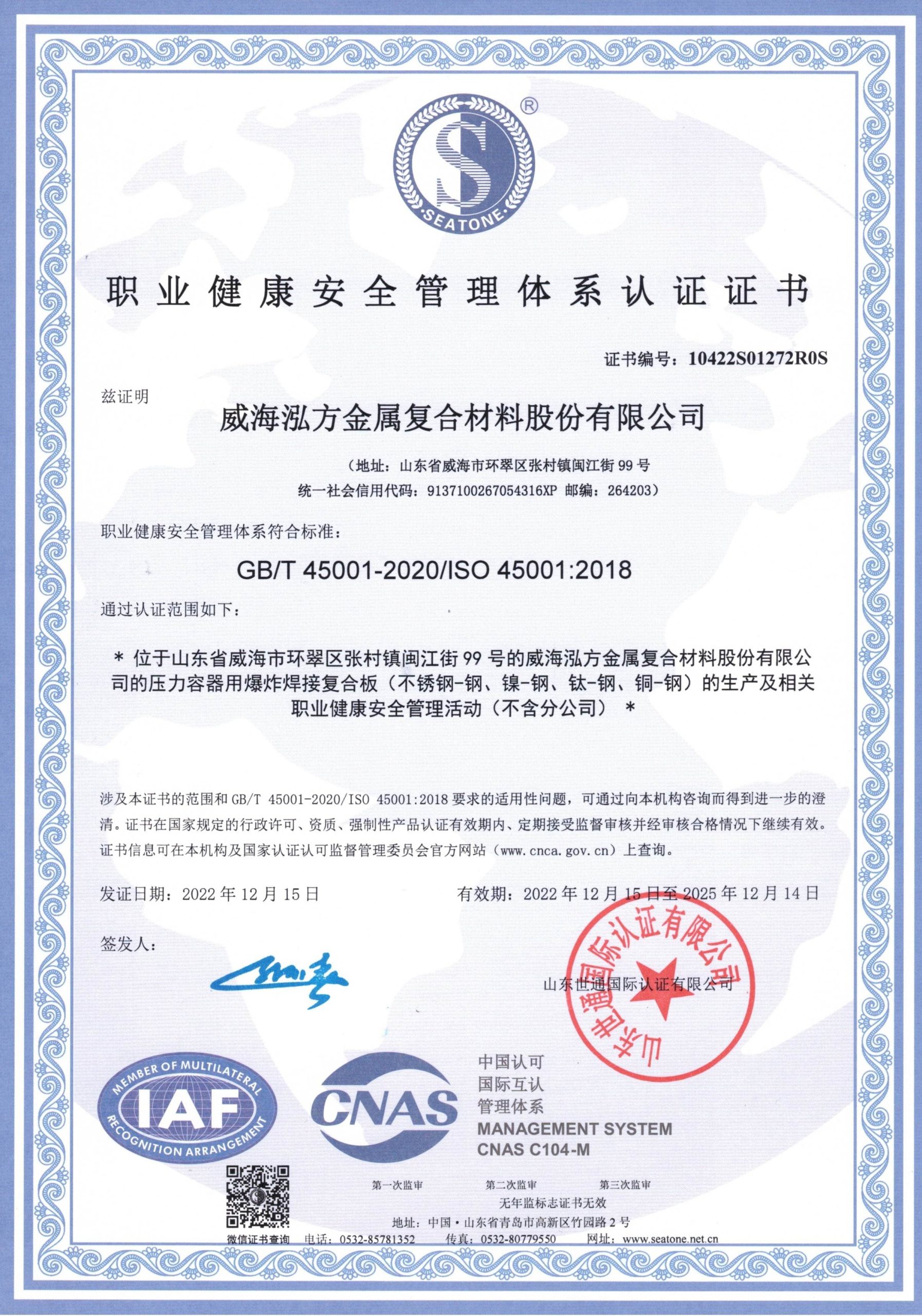Copper-steel clad plate is a new type of composite material that tightly bonds copper plate and steel plate together through specific composite processes such as explosive bonding or rolling bonding. This material combines the corrosion resistance, electrical conductivity, and good ductility of copper with the high strength and good processability of steel, offering broad application prospects.
Product Features
- High Strength: The strength of copper-steel clad plate is higher than that of ordinary steel plate, enabling it to bear larger loads.
- High Corrosion Resistance: The copper layer exhibits excellent corrosion resistance, capable of resisting the erosion of various corrosive media, thereby extending the service life of equipment.
- Excellent Electrical Conductivity: The copper layer possesses superior electrical conductivity, suitable for manufacturing electrical equipment.
- Good Processability: Copper-steel clad plate is easy to cut, weld, punch, and otherwise process, facilitating the production of products in various shapes and sizes.
Product Specifications
- Cladding Metal (Copper):
- Grade: T1, T2, T3, H96, H90, H85, etc. (selected according to specific requirements).
- Thickness Range: Customized according to customer needs, typically ranging from 0.5 to 5mm.
- Base Metal (Carbon Steel or Alloy Steel):
- Grade: Q235 series, Q345 series, 50Mn, T8, 40Cr, 16Mn, GCr15, etc. (selected according to specific requirements).
- Thickness Range: Customized according to customer needs, typically ranging from 3 to 50mm.
- Dimensional Specifications:
- Width: Customized according to customer needs, with a maximum of several meters.
- Length: Customized according to customer needs, with a maximum of several tens of meters.
Application Fields
Copper-steel clad plates are widely used in the following fields:
- Electric Power Industry: Used in the manufacture of shells and conductive components for electrical equipment such as transformers and transformers.
- Chemical Industry: Used in the manufacture of equipment with high corrosion resistance requirements, such as reactors and storage tanks.
- Metallurgical Industry: Used in the manufacture of smelting equipment and conveying pipelines.
- Aerospace: Used in the manufacture of aircraft skins, rudder surfaces, and other components requiring high strength and corrosion resistance.
- Other Fields: Such as rail transit, shipbuilding, salt and alkali production, etc.










